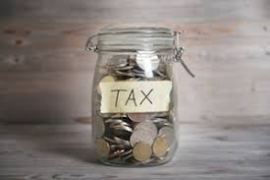It’s February – have you talked to your financial advisor about your RRSPs?
A popular belief among many Canadians is that you should contribute to your RRSP as it provides significant tax savings, while also helping you plan for retirement. While popular, I challenge this. I do believe RRSPs can benefit a lot of Canadians, but are not necessarily for everyone.
This benefit, however, can only be realized if planned for properly. Has your financial advisor truly evaluated your situation and given you the best advice?
Below are some points to consider in order to properly utilize and optimize the benefits of RRSPs (so you do not end up with a big surprise come retirement time).
1. RRSPs are fully taxable
While you get the current tax benefit from contributing to your RRSP, you need to understand that RRSPs are fully taxable. They offer tax deferral, NOT necessarily tax savings. The financial industry has led Canadian investors to this view of if you don’t want to pay taxes, contribute to RRSPs. The issue here is that it leads some Canadians to think they have more money than they really do have.

If you think you’ll be in a lower tax bracket during retirement than the one you’re currently in, RRSPs are likely a good tool for deferral and savings; however, if you have other investments and pension earnings, you may still be in a high bracket and your $1 million in RRSPs is now worth $600,000 or less once taxes are factored in.
2. Not everyone takes the deduction at the right time
While you are free to contribute up to 18% of your earned income, within certain dollar limits, you don’t actually have to take your contribution as a deduction on your current tax return – you can carry it forward. However, a lot of Canadians don’t know that, or they want their tax refund immediately so they take the deduction right away.
Without planning properly, you could eliminate any potential benefit of an RRSP. For example, if you are making $40,000 a year while living in Ontario, and contributing 18% to your RRSP every year and taking the deduction, you are saving approximately 20% (so for every $1000 you contribute, you would get $200 in tax savings). Now, fast forward to the future when you are making $100,000. If you waited until that point to take the RRSP deduction, your tax savings for every $1,000 of contribution would be approximately $370 which is 85% higher.
If you plan on having a higher taxable income in the future, then consider deferring your RRSP deduction until that time to maximize on the tax savings.
3. RRSP income could affect your Old Age Security
The Old Age Security (OAS) program is the Government of Canada’s largest pension program. It is funded out of the general revenues of the Government of Canada, which means that you do not pay into it directly.
The OAS is a monthly payment available to seniors aged 65 and older who meet the Canadian legal status and residence requirements.
This is essentially free money given to seniors upon retirement. However, there is an OAS “clawback” which means that high income earners are required to repay some or the entire OAS pension.

RRSP income counts as your income that is used to calculate the amount of OAS that you qualify to receive; it also determines whether you will have a clawback. So, if you have a company pension, other investment income, and a lot of money in your RRSPs, the amount of OAS you are able to keep may be significantly reduced.
4. RRSP vs. TFSA
The tax free savings account (TFSA) is also a popular savings tool. A TFSA is designed to offer tax-free growth with funds available throughout the contributor’s life.
Contributions to TFSAs are with after tax dollars, so you won’t get that nice tax deduction when you make a contribution; however, withdrawals from TFSAs are tax free – so if you have $100,000 in your TFSA, it is actually worth $100,000.
If you are in a low tax bracket now, you may benefit more from a TFSA because the tax savings from an RRSP are not significant. If you are in a higher tax bracket and don’t expect to be in as high of a bracket when you retire and start using your RRSP, then an RRSP makes more sense now. If your tax rates are the same when the money goes in and out, then both options are equivalent.
It is also important to note that TFSA withdrawals do not impact your OAS clawback.
5. Taxation of income in an RRSP
The taxation of income earned in an RRSP is something that should be considered. Capital gains and dividends earned inside an RRSP eventually come out as “RRSP income” on withdrawal and hence become fully taxable. They lose their nature and instead of getting preferential tax treatment (i.e. 50% of capital gains are taxable, and dividends have special tax credits), they are taxed fully as income, thereby converting into an unfavourable tax treatment.

Capital gains and dividends are better earned outside an RRSP and ideally interest income (which is 100% taxable) should be earned inside an RRSP.
To thine own future (self) be true
RRSPs provide tax deferral, which is great – but only if it makes sense for both the income position you’re currently in as well as the one you are planning for the future. It’s hard to know the future, but by analyzing these variables you’ll be able to make better choices for your present and future self.
~ EverSavvy Financial


Recent Comments